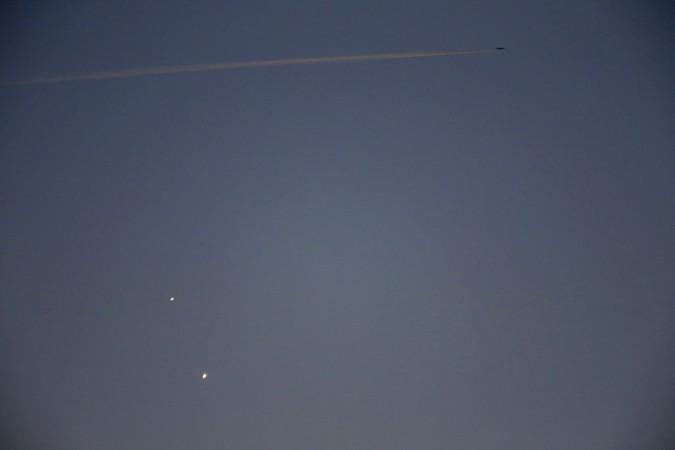
Sky watchers will be treated this week to a big celestial event. Two brightest planets – Venus and Jupiter – will put a spectacular show on Aug. 27, 2016, in their closest encounter, which may happen again only in 2065.
On Saturday, the two brightest planets will come so close that they will look one big bright star in the sky. These kinds of celestial events, which will occur on Saturday night, are called as the conjunction, but this year, the event will also be called as appulse.
"An appulse is an astronomical term that refers to a very close approach of one celestial object to another. It's related to a conjunction, but the definitions differ in detail," Space.com explained.
Jupiter and Venus' conjunction happened last year as well, but this year the two planets will put a spectacular show, when they appear extremely close to each other. The next big conjunction of Jupiter and Venus will occur after almost five decades, i.e. in November 2065.
Where and when to see them
The conjunction will be visible to the naked eyes for 30 to 60 minutes after sunset on Saturday evening around the world, but the event can be best viewed from across the Southern Hemisphere.
According to the 2016 Observer's Handbook of the Royal Astronomical Society of Canada, the two planets will be in conjunction in right ascension at 2200 GMT (6 p.m. EDT/3.30 a.m. IST). But according to the Belgian astronomical calculator Jean Meeus, Venus and Jupiter will be close to each other at 2231 GMT.
2065 celestial event
The next big conjunction will happen in 2065 when Venus will pass directly between the Earth and Jupiter. The 2065 event will be called occultation, a rare event that occurs only once every few hundred years.






